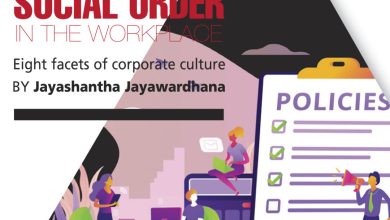SHAPING CAREERS
HOW TO BECOME A SUPERSTAR
Shaping careers in a disruptive pandemic plagued age – Dr. Muneer Muhamed
Empirical studies and a cursory glance at placement records of management schools reveal that most MBAs tend to migrate to commercial hubs such as Colombo, Mumbai, New York City and so on. This is partly because of the opportunities that metropolises offer as a result of numerous large enterprises that are headquartered there – and also since that’s where many other MBAs are headed to – so that must be the place to go!
Since similarity is an important basis for interpersonal relations, metro cities provide plenty of opportunities to hang out with like-minded folk.
Most early stage career seekers tend to follow the path of their seniors since that’s what their peers and families expect of them. But yielding to social pressure isn’t a successful career strategy. The essence of strategy is to have a differentiated value proposition; and even in a transient advantage era, differentiation is key to success.
Today’s disruptive world has invalidated the two major assumptions of strategy that industry is everything and competitive advantage once identified is sustainable. According to strategic management scholar and professor at Columbia Business School Rita Gunther McGrath, when advantages are transient, strategy needs a new playbook.
The management structures that directed resources and talent to strategic business units were previously associated with high performance. However, the talent of tomorrow will need to be able to promptly disengage and engage in new activities, shift continually, be fast and roughly right instead of precise and slow, and be disconfirmation seeking among other imperatives.
Here are four strategies to become career superstars given the pandemic and tech disrupted era we are in right now.
LESS COMPETITION Go where there is less competition. I know a few Sri Lankans who learnt Japanese and migrated to Japan, and built successful careers there. Very few foreigners
speak native languages fluently and enterprises are embracing diversity in a big way to drive innovation in the transient advantage era.
The essence of a successful strategy is to redraw the competition. One can also think of entering an industry such as pharmaceuticals, which isn’t preferred by most MBAs because of low starting salaries.
Find out where competition is less, and map your skills and interests with those industries or countries. ‘White space mapping’ and even ‘blue ocean strategy’ can be applied to personal career assessments.
UNIQUE VALUE Find a job to which you can add unique value. For instance, if you’re a doctor with an MBA, you will add tremendous value to the healthcare sector. Or if you’re a data analyst with human resource specialisation, you could guide organisations in managing their workforces in the age of AI.
If you have experience in a particular industry such as transportation with operating management tools, you’ll be able to offer unique value to a variety of businesses where process efficiency is key.
PERSONAL PATH Shed that herd mentality! Simply because your peers and friends are working a nine-to-five job doesn’t mean you have to follow suit. If you want to start your own business, think about what you’d need to do to excel as an entrepreneur instead of being employed by someone else.
You can probably create a disruptive model and unseat many existing business models. Plan for it even while doing a regular job so that you can find your path one way or another. My partner establish-
ed a deep tech startup at the
age of 55.
RISK ANALYSIS Do a risk return analysis and take a riskier strategy such as joining a startup. If you had taken a chance and joined a risky startup 15 years ago, your risks would have been huge. But of course, the returns (when revenue and valuation skyrocketed a decade or so later) would have been magnificent.
Like the trade-off between risk and return in the financial markets, there’s one for careers as well. Playing it safe may be comfortable but if you really want to accelerate your career, implementing a higher variance and riskier strategy may be the way to go.
During the course of your career, you may want to choose one of these four strategic options at appropriate career junctures depending on the opportunities and competitive positions available.
The risks you take may not be as risky as you fear. If things don’t work out, you can always do what you were going to do in the first place. Over the course of a 30-40 year career, taking prudent risks in the early stages seems very sensible. And who knows, you may drive an important function at a huge rapidly growing firm much earlier than you expect.
Success is not measured by where you end up in the first half of your career. What matters is where you are in the second half, which is why your investment in the early stages is important.
Like in a film, it’s the second half of the production that determines whether the movie will be a success or failure.






